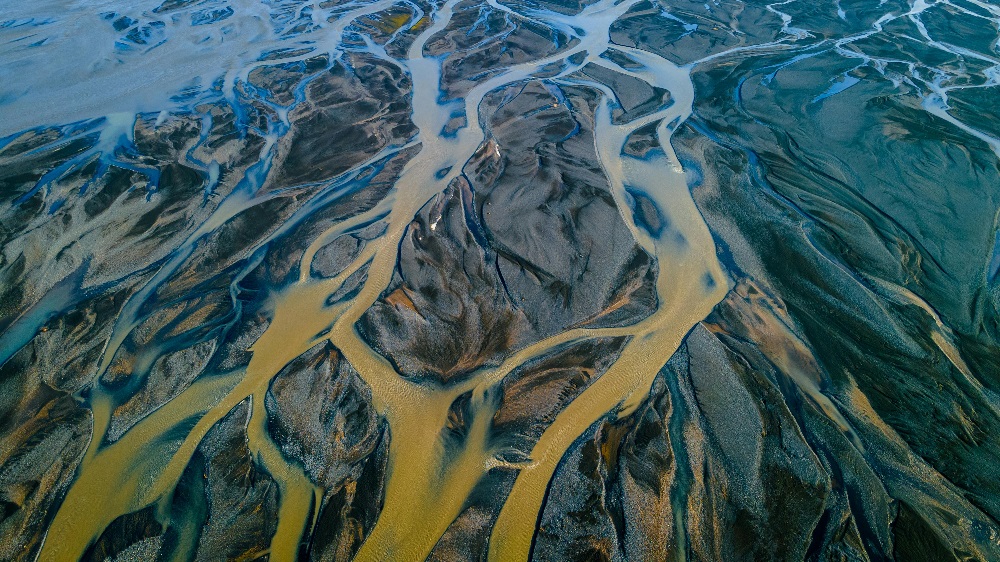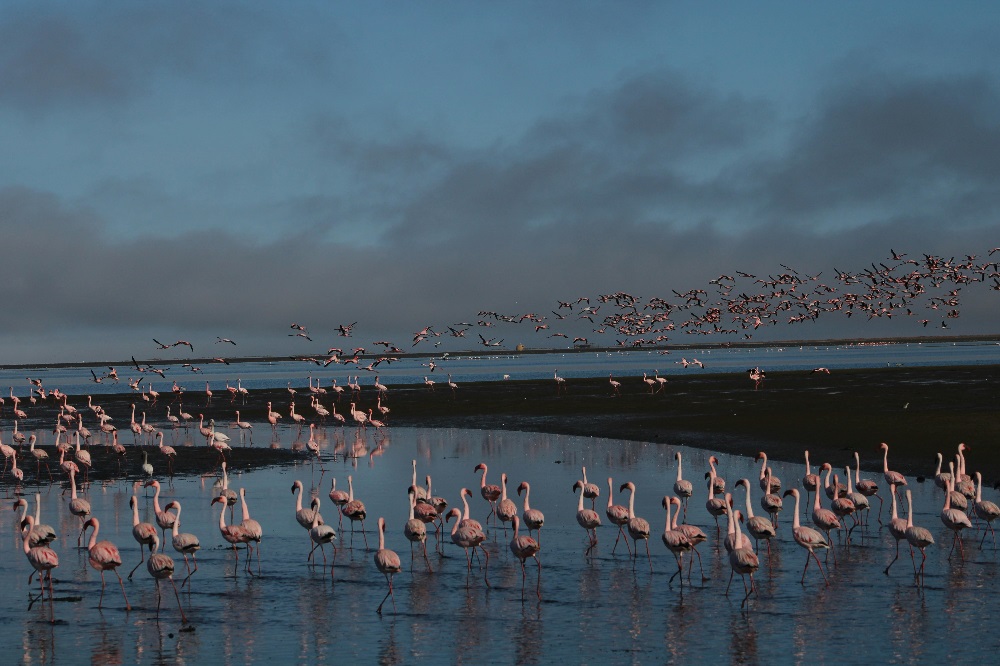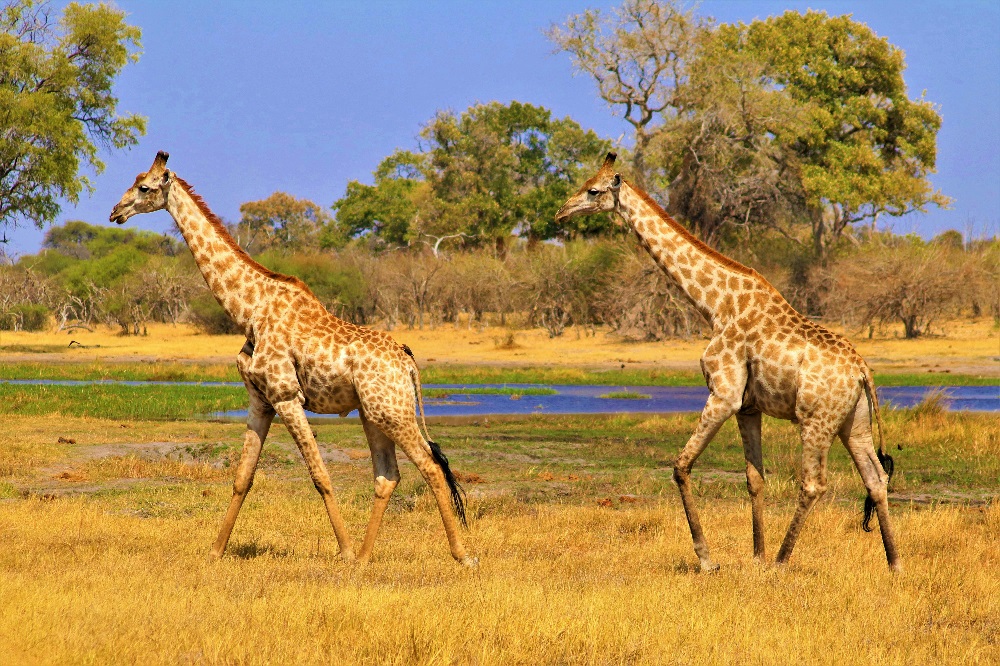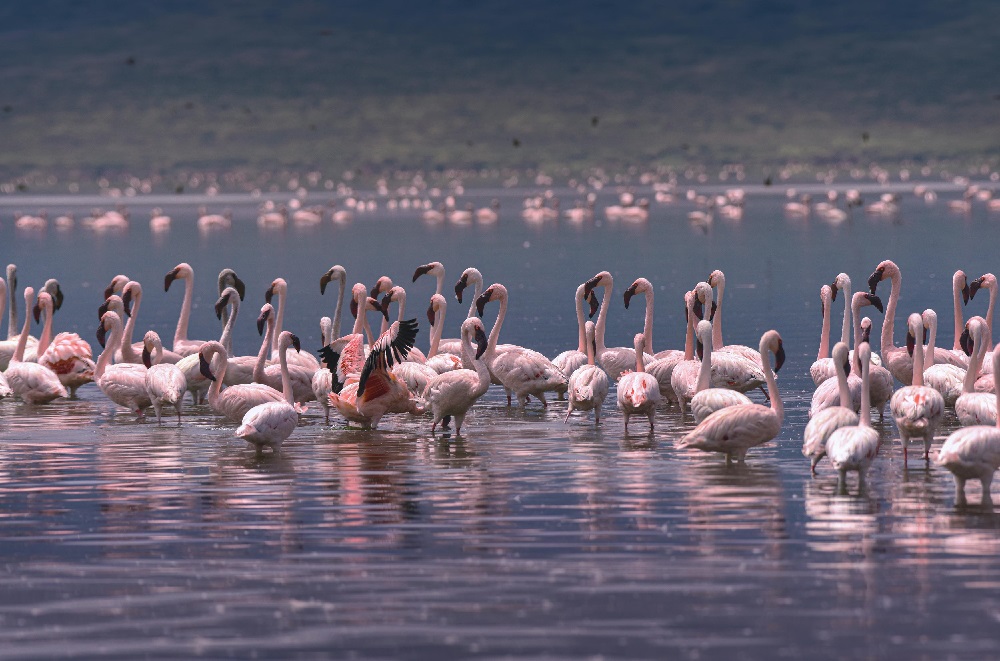Choosing between the Serengeti and the Okavango Delta is like deciding between two very different masterpieces in an art gallery. Both are exceptional in their own right, but they offer vastly different safari experiences. The Serengeti, located in Tanzania, is synonymous with the Great Migration—an epic wildlife spectacle where over a million wildebeest, zebra, and gazelle thunder across the plains in search of fresh pasture. This event alone makes the Serengeti a must-visit for those craving raw, large-scale wildlife action. The vast open savannahs make it easy to spot predators like lions, cheetahs, and leopards, and the sheer volume of game is breathtaking.
In contrast, the Okavango Delta in Botswana is a lush, seasonal floodplain teeming with life, yet it feels far more intimate and serene. Declared a UNESCO World Heritage Site, the Delta is unique because it floods during the dry season, attracting animals from miles around. Instead of driving over dusty roads, you may find yourself gliding silently through winding waterways in a traditional mokoro canoe, surrounded by the calls of birds and the occasional splash of a hippo. The Delta’s diversity extends beyond big game; it’s also a paradise for birdwatchers and lovers of more elusive species.
Ultimately, the Serengeti is better for witnessing the grandeur of Africa’s most famous migration and seeing a high density of large predators, while the Okavango Delta is better for those seeking a unique, water-based safari experience with fewer crowds and a sense of total immersion in nature. The choice depends on whether you’re after sweeping drama or tranquil beauty—but for many safari enthusiasts, visiting both is the ultimate goal.

What is One Tourist Activity That is Unique to the Okavango Delta?
Among the many adventures possible in the Okavango Delta, the most iconic and unique activity is the mokoro safari. The mokoro is a traditional dugout canoe once carved from a single tree trunk (now often made from sustainable fiberglass to protect old-growth trees). Guided by skilled polers from the local communities, visitors are gently propelled through crystal-clear channels lined with papyrus reeds, water lilies, and palm islands.
This slow and silent form of travel is unlike anything else in the safari world. While game drives bring you close to animals on land, mokoro excursions immerse you in the watery heart of the Delta, offering encounters with creatures that thrive in or near the water. You might spot a family of elephants wading through the shallows, red lechwe bounding through flooded plains, or a fish eagle swooping overhead. It’s also one of the best ways to appreciate the Delta’s rich birdlife, as the quiet approach allows you to observe species without disturbing them.
The mokoro experience is not just about wildlife; it’s also about connecting with the land and the traditions of the people who have lived in harmony with the Delta for centuries. Polers share their knowledge of the ecosystem, pointing out medicinal plants, explaining animal behaviors, and telling stories of the Delta’s history. For many travelers, this gentle journey becomes the most memorable highlight of their trip.
Why is the Okavango Delta So Expensive?
The Okavango Delta is often considered one of the most exclusive safari destinations in Africa, and its pricing reflects this. One reason for the higher cost is its remote location and limited accessibility. The best lodges are often reachable only by small charter planes from Maun or Kasane, and these flights are factored into the overall cost. Transporting supplies into such an isolated area requires significant logistics, and this adds to the price of accommodation and operations.
Another factor is Botswana’s tourism policy, which focuses on high-value, low-impact travel. By limiting the number of visitors and prioritizing conservation, the government ensures the ecosystem remains pristine. This policy also means fewer lodges and camps, many of which are small, luxurious, and offer exceptional service, but come with higher nightly rates. The cost supports not just guest comfort, but also large-scale conservation efforts and community development programs.
In addition, safaris in the Delta are often all-inclusive, covering meals, guided activities, park fees, and sometimes even laundry services. The guides in the Delta are some of the most experienced in Africa, and the guest-to-guide ratio is low, ensuring personalized attention. While the price tag may seem steep, what you receive is a once-in-a-lifetime experience in one of the world’s most extraordinary wildlife habitats, with the assurance that your visit contributes directly to its protection.

What Month Does the Okavango Delta Flood?
The Okavango Delta’s flooding is one of nature’s great paradoxes—it occurs not during the local rainy season, but months later, during Botswana’s dry season. The waters that fill the Delta originate in the highlands of Angola, where heavy summer rains fall between January and March. This water slowly makes its way through the Cubango and Okavango Rivers, traveling over 1,200 kilometers before reaching the Delta.
By the time it arrives—usually between May and June—the rains have already stopped in Botswana, and the surrounding Kalahari region is dry. This flood transforms the Delta into a glittering oasis, attracting wildlife from all directions. The water level remains high through August and September before gradually receding toward the end of the year.
For travelers, this means that the peak safari season in the Delta coincides with the height of the floods. Game viewing is at its best because animals are concentrated along the waterways, and the lush scenery makes for stunning photography. Planning your visit around this natural phenomenon is key to experiencing the Delta at its most vibrant.
Is it Safe to Swim in the Okavango Delta?
Swimming in the Okavango Delta is generally not recommended due to the presence of potentially dangerous wildlife. The waterways are home to hippos and Nile crocodiles, both of which can be aggressive if approached. Even in seemingly calm and shallow areas, these animals can be present, making unsupervised swimming risky.
That said, some lodges and camps located on safe, shallow channels or on elevated islands may offer designated swimming spots where the water is free from large predators. These areas are carefully monitored by guides who know the terrain and animal movements. There are also camps with swimming pools, allowing guests to cool off while enjoying views of the Delta.
If you’re tempted to take a dip in a natural channel, always follow the advice of your guide. The Okavango Delta is a place where wildlife roams freely, and the safety guidelines are there to protect both visitors and animals.
What Should I Wear to the Okavango Delta?
Packing for the Okavango Delta means preparing for a range of temperatures and activities. Lightweight, breathable clothing in neutral colors is best for blending into the environment and staying comfortable during game drives and mokoro trips. Long-sleeved shirts and trousers are ideal for protection against the sun and biting insects, especially during early morning and evening outings.
A wide-brimmed hat and good-quality sunglasses will shield you from the strong African sun, and a light waterproof jacket can be useful during the flood season when unexpected showers occur. Sturdy walking shoes are essential for any bush walks, and sandals or casual shoes are perfect for relaxing in camp.
In the cooler months from May to August, mornings and evenings can be chilly, so bring a warm fleece or jacket. Layers are the key to staying comfortable as temperatures change throughout the day. Don’t forget insect repellent, sunscreen, and binoculars to make the most of your wildlife viewing experience.
Can You See the Big 5 in Okavango Delta?
The Okavango Delta offers excellent opportunities to see members of the Big 5, though not all are equally common. Lions, leopards, and African elephants are frequently sighted, with large elephant herds often seen congregating near the water during the dry season. Buffalo are also present, sometimes in impressive numbers, especially in the Moremi Game Reserve, which forms part of the Delta.
Rhinos, however, are rarer due to historical poaching pressures, though conservation efforts have led to successful reintroductions in certain private reserves. While spotting all five in a single trip is possible, the Delta’s real magic lies in the diversity of other species—cheetahs, wild dogs, sable antelope, and an extraordinary array of birdlife. The combination of land- and water-based safaris means every day brings different sightings, making the experience dynamic and unpredictable.
What is the Closest City to the Okavango Delta?
The closest city to the Okavango Delta is Maun, often referred to as the gateway to the Delta. While it has the feel of a bustling frontier town rather than a large urban center, Maun is the primary hub for travelers heading into the Delta. It has an international airport with connections to Johannesburg, Cape Town, Gaborone, and other regional destinations.
From Maun, guests typically transfer by light aircraft to lodges within the Delta or travel by 4×4 to nearby reserves. The town has a range of accommodations for those needing to overnight before or after their safari, as well as shops, restaurants, and tour operators. Though most visitors pass through quickly, Maun offers a glimpse into the unique blend of cultures and lifestyles that thrive on the edge of one of the world’s great wilderness areas.
What is the Deepest City in the Okavango Delta?
Technically, the Okavango Delta is not home to cities in the conventional sense, as it is a vast, protected wetland ecosystem rather than an urbanized area. However, within the network of channels and lagoons, there are various camps and lodges located deep inside the Delta’s pristine wilderness. The term “deepest” here would refer to lodges or camps that are farthest from the mainland and most immersed in the seasonal floodwaters.
Some of these deep-Delta locations can only be accessed by light aircraft or a combination of flight and boat transfers, as road access is impossible during much of the year. Staying in such places gives travelers the feeling of being completely cut off from the outside world, surrounded only by nature’s soundtrack of bird calls, rustling reeds, and splashing wildlife. The isolation is part of the magic, making guests feel as though they’ve stepped into an untouched Eden.
While Maun is the closest hub for entry into the Delta, the true “deep” experience lies in remote concessions like the Jao Concession or the Xigera Lagoon region, where the only “city lights” are the stars reflecting off the water at night.
How Long Do You Need in Okavango Delta?
The ideal amount of time to spend in the Okavango Delta depends on your budget and the depth of experience you want. At a minimum, three nights allows for a good introduction to both water- and land-based safaris, giving you enough time to settle in, explore, and enjoy multiple guided activities without feeling rushed.
For those who want to fully immerse themselves, five to seven nights—split between two different camps—offers the richest experience. This allows you to experience diverse habitats within the Delta, from the permanent waterways to the drier floodplains, each supporting different wildlife. It also increases your chances of seeing rare animals like African wild dogs or the elusive sitatunga antelope.
A longer stay also provides time to slow down and appreciate the subtler wonders of the Delta: a carmine bee-eater diving for insects, the way the light changes over the floodplains, or the sound of distant hippos as you drift off to sleep. Unlike rushed itineraries, a week in the Delta lets you settle into the rhythm of the wild, making your safari both more relaxing and more rewarding.
Are There Malaria in the Okavango Delta?
Yes, the Okavango Delta is in a malaria-risk area, particularly during and after the rainy season, which typically runs from November to April. Malaria is transmitted by the bite of an infected female Anopheles mosquito, and the combination of warm temperatures and standing water in the Delta creates ideal breeding conditions for these insects.
Travelers are strongly advised to take precautions, including consulting their doctor about appropriate malaria prophylaxis before their trip. In addition to medication, preventive measures like wearing long-sleeved clothing in the evenings, using insect repellent, and sleeping under mosquito nets (provided by most lodges) are essential.
Many high-end camps are located on islands or elevated areas where mosquito activity is lower, but the risk is not eliminated entirely. With the right precautions, the chances of contracting malaria are minimal, and it should not deter you from visiting one of Africa’s most extraordinary wildlife destinations.
What is the Best Month to Go to Okavango Delta?
The best month to visit the Okavango Delta depends on what you want to see and experience, but generally, the peak period is between July and October. This is the dry season in Botswana, yet it coincides with the Delta’s annual flood, creating lush waterways surrounded by dry land that draws wildlife from miles around.
July and August bring cooler temperatures, making game drives and boat excursions comfortable. September and October, while hotter, often deliver some of the most dramatic wildlife viewing as animals congregate near water sources. The floodwaters are at their most expansive in June and July, making mokoro trips especially scenic during these months.
Bird enthusiasts may prefer to visit between November and March, when migratory species arrive and the Delta transforms into a green, lush paradise. However, this is also the rainy season, which can make access more challenging and wildlife slightly harder to spot due to the abundance of water. Ultimately, timing your visit is about balancing personal comfort, desired activities, and specific wildlife interests.
Can You Self Drive Okavango Delta?
Self-driving in the Okavango Delta is possible in certain areas, particularly in the Moremi Game Reserve, which forms part of the eastern Delta. However, this is not a typical road trip destination—it requires a serious commitment to off-road driving, as the terrain can be challenging with deep sand, water crossings, and unmarked tracks.
Most visitors opt for guided safaris because experienced guides know the land intimately, from safe water channels to seasonal wildlife movements. If you do choose to self-drive, a fully equipped 4×4 vehicle, recovery gear, and the ability to navigate remote environments are essential. Many travelers who self-drive also camp, adding to the adventure but requiring thorough preparation and self-sufficiency.
It’s worth noting that large portions of the Delta are in private concessions accessible only by air or organized tours, meaning self-drivers can explore only a fraction of the ecosystem. For most people, combining a self-drive trip through other parts of Botswana with a few nights at a fly-in Delta lodge offers the perfect balance of independence and guided expertise.



